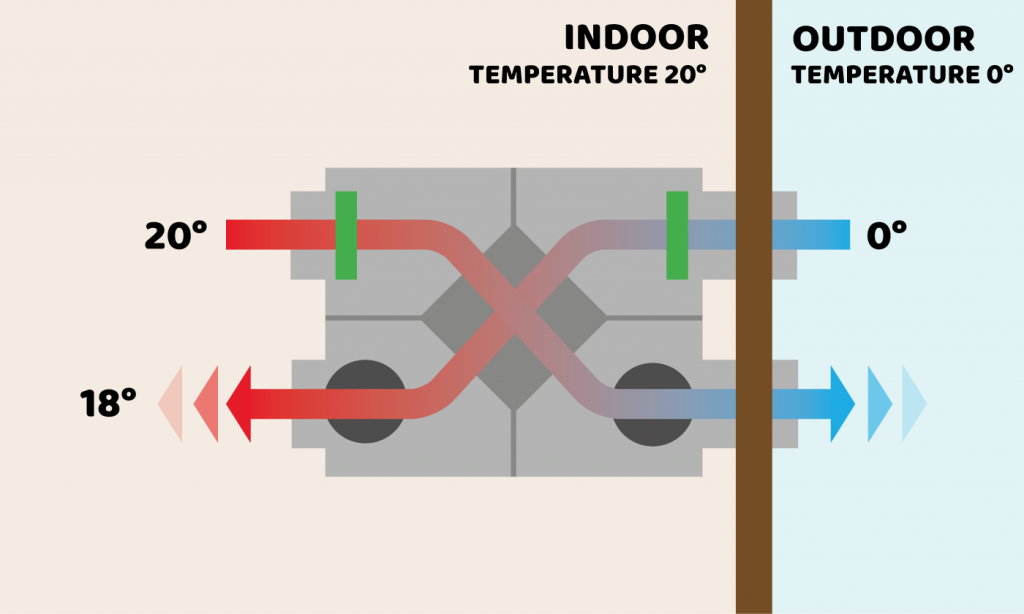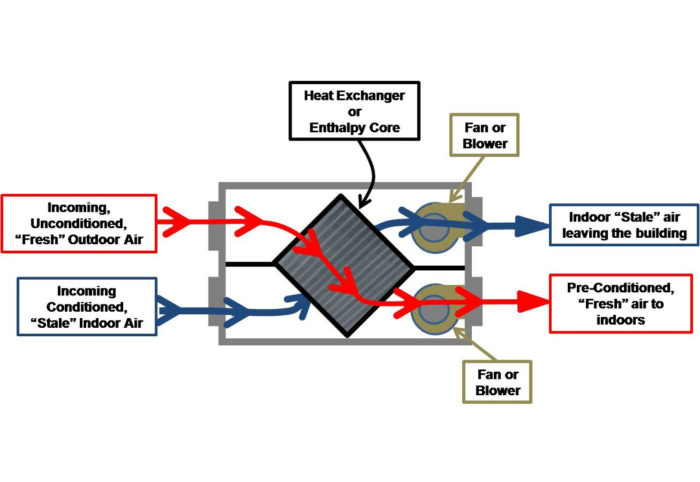10 Essential Advantages Why HRV Improves Home Comfort
Checking out the Benefits of Heat Recovery Ventilation for Energy Performance in Homes
Heat Recovery Ventilation (HRV) systems supply home owners a practical approach to enhancing energy effectiveness. By recovering heat from outward bound air, these systems can substantially minimize heating & cooling costs. In addition, they supply a stable supply of fresh air, improving interior air high quality and comfort degrees. As property owners consider lasting choices, recognizing the subtleties of HRV systems becomes significantly essential. What elements should one examine prior to making such an investment?
Recognizing Heat Recovery Ventilation Solutions

How HRV Enhances Indoor Air Top Quality

Energy Savings: The Financial Advantages of HRV
Making best use of power performance, heat recovery ventilation (HRV) systems offer considerable economic benefits for house owners. By recouping and reusing warm from exhaust air, HRVs significantly get more decrease home heating and cooling costs. This modern technology can bring about power cost savings of approximately 30%, depending on environment and usage patterns. House owners often notice lowered energy expenses soon after setup, making HRVs a monetarily smart investment gradually. Furthermore, numerous areas give incentives or discounts for energy-efficient upgrades, further enhancing the economic allure. As energy prices proceed to increase, the cost-effectiveness of HRVs comes to be progressively clear. In general, the consolidation of HRV systems not only advertises power effectiveness yet additionally visit this site right here adds to lasting economic cost savings for families.
The Ecological Effect of Heat Recovery Ventilation
A considerable ecological benefit of heat recovery ventilation (HRV) systems hinges on their capability to decrease general energy consumption. By recovering warm from exhaust air and moving it to inbound fresh air, HRV systems reduce the demand for energy-intensive heating and cooling down methods. This reduction in energy need adds to decrease greenhouse gas emissions, as less fossil gas is needed to keep comfortable indoor temperatures. Additionally, HRV systems boost indoor air high quality by effectively trading stale air with fresh outside air, lowering dependence on mechanical cooling systems that can harm the environment. On the whole, the implementation of HRV systems supports sustainable living methods and straightens with worldwide initiatives to deal with climate change by advertising energy efficiency in property settings.
Picking the Right HRV System for Your Home
Exactly how can house owners guarantee they choose the appropriate heat recovery ventilation (HRV) system for their needs? They should analyze their home's dimension and format, as these elements influence air flow needs. Next off, reviewing the system's performance scores is essential, as higher ratings indicate better efficiency and energy savings. Property owners should likewise take into consideration installation and upkeep prices, contrasting various brands and designs for worth. Furthermore, check out this site it is very important to examine sound degrees, as some systems run even more silently than others. Consulting with a/c experts can supply tailored recommendations based on specific home problems. Lastly, checking out individual evaluations and warranties can assist in making an educated choice, guaranteeing that the chosen HRV system successfully boosts interior air high quality and power effectiveness.
Frequently Asked Questions

How Often Should I Tidy or Keep My HRV System?
The regularity of cleaning or preserving a heat recuperation ventilation (HRV) system typically depends on usage and environmental aspects. Typically, it is advisable to carry out maintenance every six months to guarantee peak performance and air high quality.

Can HRV Systems Help Reduce Humidity Levels Indoors?
HRV systems can effectively minimize interior moisture degrees by exchanging stagnant, damp air with fresh, drier air from outdoors. HRV Heat Recovery Ventilation. This process aids keep a well balanced interior atmosphere, enhancing comfort and preventing moisture-related issues
What Is the Life expectancy of a Typical HRV System?
The life expectancy of a normal heat recovery ventilation (HRV) system varies, usually lasting in between 10 to 15 years. Regular upkeep can prolong its effectiveness and operational life, making certain peak performance throughout its usage duration.
Are There Any Kind Of Noise Interest In HRV Systems?
Sound worry about HRV systems can emerge, especially from fan operation. Nonetheless, numerous contemporary devices are designed to minimize sound degrees, guaranteeing they operate quietly while keeping efficiency, which addresses possible disruptions in living settings.
Can I Install an HRV System Myself, or Do I Need a Professional?
The specific contemplated whether to install the heat recovery ventilation (HRV) system personally or work with an expert. Usually, while do it yourself setup is feasible, proficiency warranties proper performance and conformity with neighborhood building codes, boosting system performance.